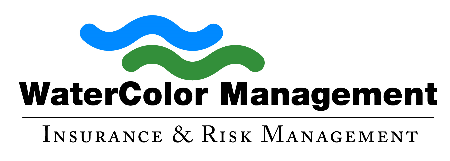
Americans nationwide rely on water treatment facilities to deliver safe, reliable water. With the market on the path to continued growth, future success revolves around finding solutions to current challenges, ensuring safe operations, and embracing a digital transformation.
Challenges Water Treatment Facilities Face
Cost plays the most significant role in making things happen in this vital industry. Whether a small or large facility, the energy consumed is expensive. This consumption often accounts for a third of operational expenses. The operation itself also comes with expenses. The materials needed to stabilize the water have seen price increases in recent years, making reducing sludge and maximizing chemical usage more critical than ever.
Plant management also comes with difficulties that often have no easy solutions. Water treatment inherently involves a decentralized and complicated process, which means that key players may not always have the right information at the right time. Conversely, industries across the board have difficulty finding quality employees. That labor shortage and lack of experienced operators lead to potentially costly and devasting human errors.
Tips for Plant Safety
Regarding management and labor at a water treatment plant, developing a water treatment plan infused with safety helps minimize the risk of injuries and mistakes. A vital element of that revolves around the equipment. Creating and sticking to a maintenance schedule enables potential areas of concern to get caught early. Maintaining equipment also increases its lifespan and functionality, helping avoid early replacement costs.
In this field, safety should also take the spot. Since many employees have to work at tall heights and deal with moving equipment, establishing safety protocols limits the potential of an incident. Essential items to have in place include:
- Fall protection
- Properly labeled equipment
- Appropriate safety gear
- Fire protection equipment
The Future of Water Treatment
As new technologies take the world into new possibilities, upcoming water treatment trends may solve many of the industry’s challenges. The industry sits on the edge of transforming from potentially game-changing new processes to incorporating the latest data management technologies. Key innovations to watch for include:
- Thermal Hydrolysis: This technology simplifies the complex separating and processing stage. Instead of planning for large sludge amounts, this process uses sludge as energy via biogas generation.
- Internet of Things, Sensors, and Technological Devices: Everyone lives in a connected world, from smartphones to intelligent buildings. That connectivity via different devices comes with access to massive amounts of data that once seemed impossible to obtain. From artificial intelligence to machine learning and more, these technologies enable fast and accurate data management in real time, allowing for quicker and better decision-making and better planning for the future.
- Microbial Fuel Cells: This emerging process uses microbes to complete both water treatment and clean and store energy. The bacteria can create charged electrons, which may generate power out of digested sludge.
While the water treatment future looks bright, companies must focus on the now and incorporate safe practices and streamlined operations to meet growing water demands.
About Watercolor Management
Watercolor Management has insured the water industry for over 30 years. Our policies include unlimited defense cost coverage in the event of a lawsuit against you. Call us at (855) 929-0824 or email info@watercolormanagement.com for a quick quote for your Water Business Professional, Products/Completed operations, Pollution and General Liability Insurance.




